Functional Vision Analyzer (FVA)
Ideal for pre- and post-op cataract, refractive surgery and clinical trials
- Will perform all of the tests needed to evaluate functional vision and more: visual acuity, contrast sensitivity, depth perception, color vision, and potential acuity.
- Includes contrast sensitivity tests (sine wave gratings)
- 4 lighting conditions – Day and night, with and without glare
- Meets the FDA clinical research standards
- Meets ANSI standards with unsurpassed homogeneous illumination
- EyeView software provides the ability to demonstrate patients’ functional vision with real-world images.
Analysis using the EyeView software.
Note the EyeView software is downloadable via a link provided with the purchase of a Functional Vision Analyzer.
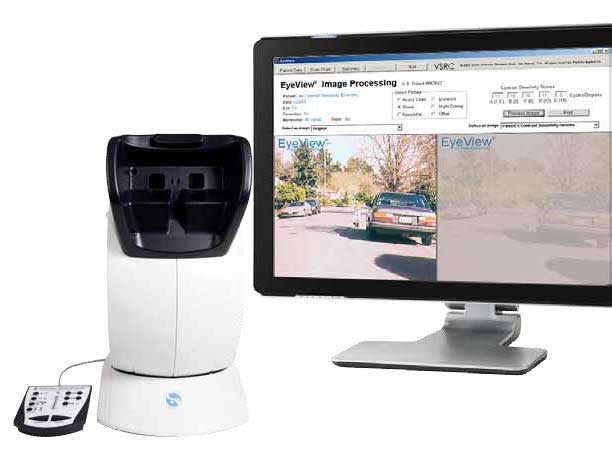
Request PricingAdd to cart
FEATURES INCLUDE:
- New unsurpassed homogeneous illumination
- Background luminance complies with international standards
- All light levels microprocessor controlled and continually calibrated
- Binocular glare testing
- Target illumination comes standard with 3.0 cd/m2 for night testing, and 85 cd/m2 for day testing, or may be customized* to specific needs with a value range of 1.0 cd/m2 to 125 cd/m2
- Glare luminance at distance comes standard with 1 Lux and 28 Lux for night glare testing; 10 Lux and 135 Lux for day glare testing
- Sine Wave Gratings 5 spatial frequencies 1.5, 3, 6, 12, and 18 cycles per degree
- Potential acuity for a quick assessment of macular function
- Includes (F.A.C.T.®) contrast sensitivity slide package to evaluate patients’ overall functional vision
* Note: Customized target illumination, glare levels, & test packages must be determined upon order placement.
Click to view full image:
- Functional Vision Analyzer
- Remote Control Panel
How do I clean and disinfect the screener cover?
Clean and disinfect the forehead activator bar and surrounding area gently with disinfectant wipes or a soft, slightly damp, and lint-free cloth with alcohol. We have used 70% isopropyl alcohol to clean and disinfect our equipment surfaces. Clean gently with a damp cloth and never spray alcohol directly on the screener surfaces.
What is contrast sensitivity?
Contrast sensitivity (CS) refers to the ability of the visual system to distinguish between an object and its background. For example, imagine a black cat on a white snowy background (high contrast) versus a white cat on a white snowy background (low contrast). In all conditions where visual acuity is reduced, CS is reduced as well. However, sometimes CS is reduced more than expected based upon the visual acuity alone. This means that if only visual acuity is tested, the visual disability of the person with relatively reduced contrast sensitivity will be underestimated.
How is CS tested?
CS is tested in two ways: low contrast letters or sine-wave grating with varying spatial frequency. CS testing measures visual performance over a wide range of sizes and contrasts. The purpose of the test is to assess how well a person functions visually to see everyday objects such as faces and signs.
What are the indications for CS testing?
CS testing is useful as an auxiliary means of assessing visual difficulties in patients who test well with a traditional Snellen chart. A Snellen chart employs high contrast, i.e., black letters on a white background. Many people can read the 20/20 line and still complain of visual difficulties, such as driving at night (i.e., low contrast conditions). This may be due to optical aberrations of the visual system, contact lens problems, ocular pathology, complications related to medications, and ocular manifestations of systemic diseases.
Why am I not getting ‘light’ to my instrument?
Both left and right eye buttons (at least one) must be illuminated on the control panel for the instrument to receive light.
Why are some of my slides up side down?
Test slides will appear upside-down or reversed when looking at a near point slide at a far point setting (and vise versa).
What lighting condition is acceptable for the testing room?
Any lighting condition is acceptable for day testing. Night testing should be administered in a dimly lit room.
Which slide/test responses can be entered into the EyeView software program?
The EDTRS and the contrast sensitivity test slide responses can be entered into the EyeView software program.
How do you change the light bulbs in the vision tester?
There are no light bulbs in the vision tester. The unit is run solely on LED’s (Light Emitting Diodes).
Why are there two glare levels?
The first glare level is ideal for ‘in practice’ use. The second glare level is a debilitating glare level (very bright); more useful in clinical studies.
Why won’t my dial/knob advance/reverse?
Most often, the drum will not advance/reverse if the back/rear door is not securely closed.
Can I use glare in any of the lighting conditions (i.e., Day at Near)?
No, glare testing cannot be done at the near setting. However, an alternative will be to use a near lens (in the ancillary holder).
Can glare be used on any other tests besides contrast sensitivity?
Yes, glare can be used on any test, although this is not common.

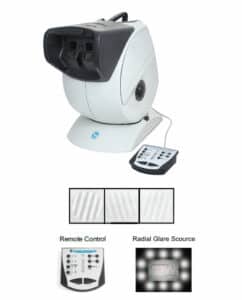
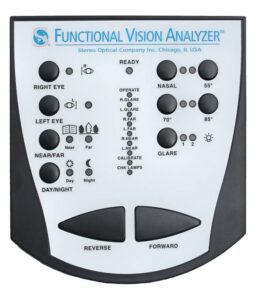
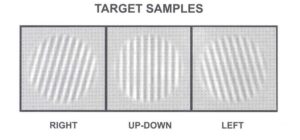
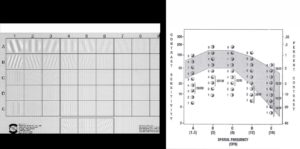
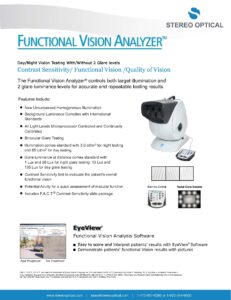
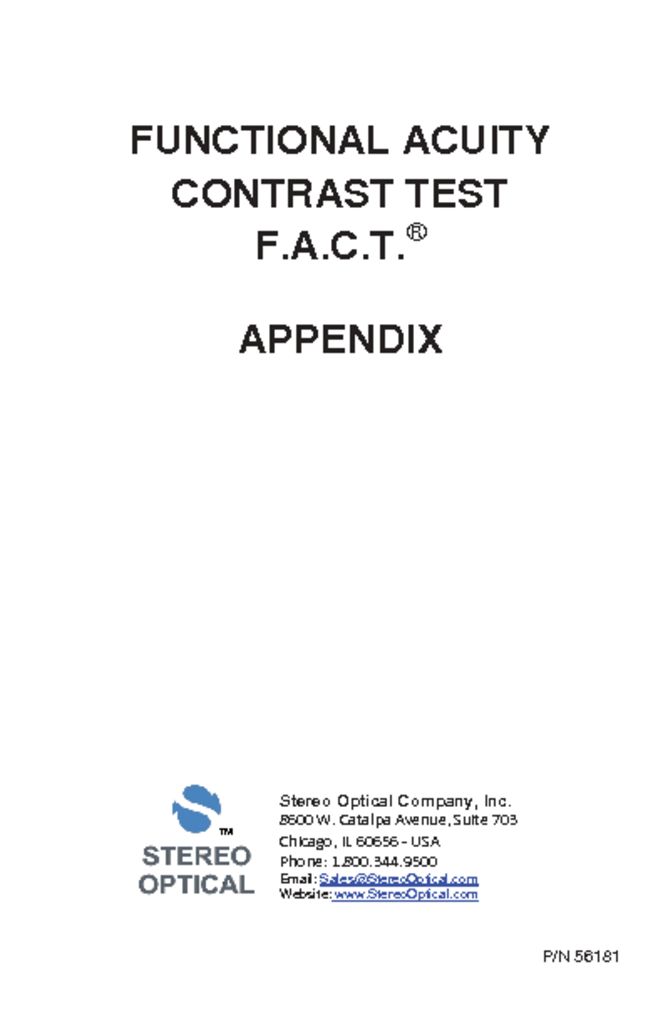
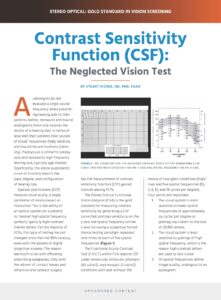
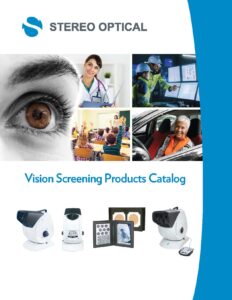
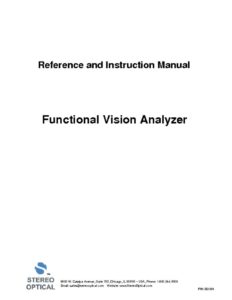
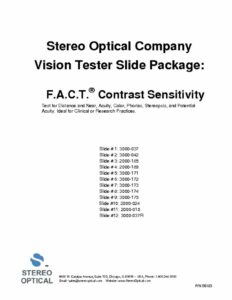


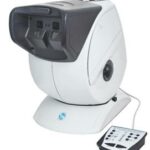 The Stereo Optical
The Stereo Optical